Will We One Day Explore The Worlds Of Our Solar System? How Long Will This Take?

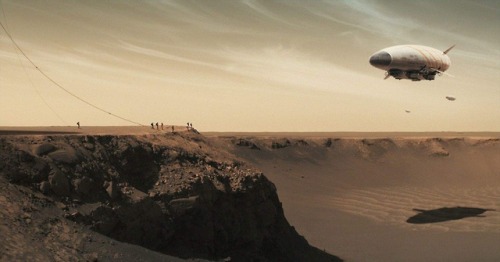
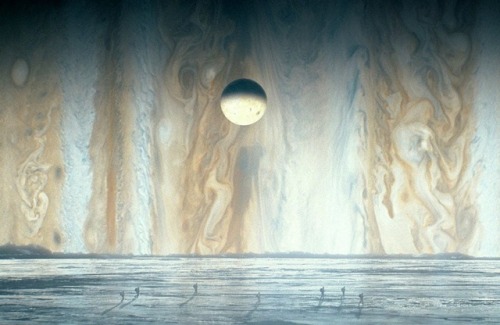

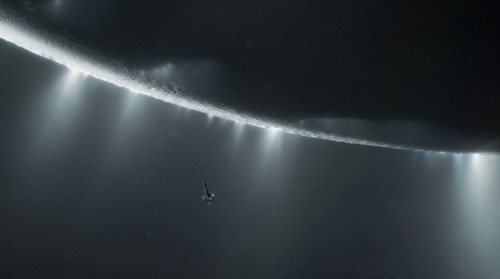
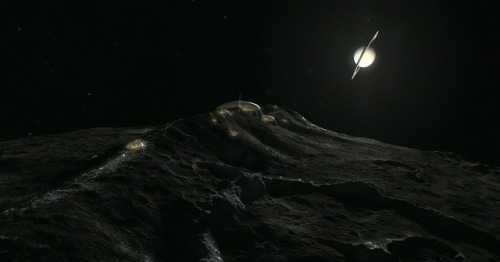
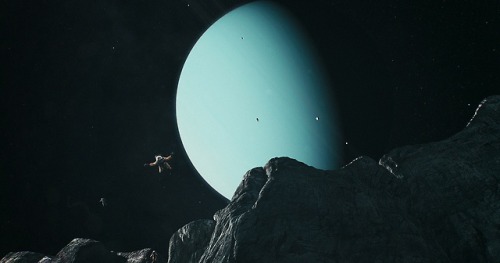
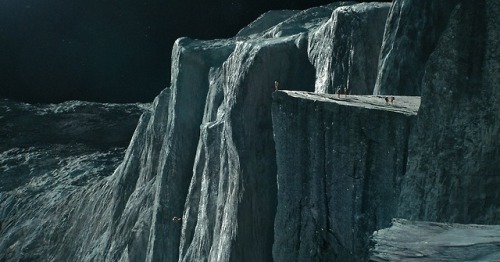

Will we one day explore the worlds of our solar system? How long will this take?
We have a diversity of worlds in our solar system. Majestic places…
Imagine being able to visit Mars and its hostile climate. Imagine being able to visit the moons of Jupiter, observe Io: the volcanic moon, Europa, the frozen moon and Ganymede a moon larger than Mercury itself and that has its own magnetic field. Imagine visiting the moons of Saturn and maybe passing close to your rings… Imagine orbiting or floating through Titan’s atmosphere and closely watching its lakes and seas of methane and liquid ethane. Imagine getting to know the geysers of Enceladus, the valleys of Tethys, and the craters of Mimas… Imagine being able to see the moons of Uranus and have a view of Verona Rupes, the largest cliff of the solar system, located in Miranda. Imagine being able to be in Triton and to be able to observe the cold and azualdo Neptune in the sky…
More Posts from Ocrim1967 and Others
Mis conversaciones favoritas son aquellas que se tienen con el lápiz y el papel.
-Zufriedenheit.
All cats are beautiful 🐱❤️




















Galactic Ghouls and Stellar Screams
A quiet, starry night sky might not seem like a very spooky spectacle, but space can be a creepy place! Monsters lurk in the shadowy depths of the universe, sometimes hidden in plain sight. Many of them are invisible to our eyes, so we have to use special telescopes to see them. Read on to discover some of these strange cosmic beasts, but beware — sometimes fact is scarier than fiction.
Monster Black Holes ⚫

You know those nightmares where no matter how fast you try to run you never seem to get anywhere? Black holes are a sinister possible version of that dream — especially because they’re real! If you get too close to a black hole, there is no possibility of escape.
Just last year our Fermi Gamma-ray Space Telescope traced an otherworldly ghost particle back to one of these monster black holes, providing additional insight into the many signals we’re picking up from some of the most feared creatures in the cosmic deep.
But it gets worse. Our Hubble Space Telescope revealed that these things are hidden in the hearts of nearly every galaxy in the universe. That means supermassive black holes lurk in the shadows of the night sky in every direction you look!
A Hazy Specter 👻

This fiendish specter lives in the center of the Milky Way, haunting our galaxy’s supermassive black hole. But it’s not as scary as it looks! Our SOFIA observatory captured streamlines tracing a magnetic field that appears to be luring most of the material quietly into orbit around the black hole. In other galaxies, magnetic fields seem to be feeding material into hungry black holes — beware! Magnetic fields might be the answer to why some black holes are starving while others are feasting.
Bats in the Belfry 🦇

The universe has bats in the attic! Hubble spotted the shadow of a giant cosmic bat in the Serpens Nebula. Newborn stars like the one at the center of the bat, called HBC 672, are surrounded by disks of material, which are hard to study directly. The shadows they cast, like the bat, can clue scientists in on things like the disk’s size and density. Our solar system formed from the same type of disk of material, but we can only see the end result of planet building here — we want to learn more about the process!
Jack-o-lantern Sun 🎃

A jack-o-lantern in space?! Our Solar Dynamics Observatory watches the Sun at all times, keeping a close eye on space weather. In October 2014, the observatory captured a chilling image of the Sun with a Halloweenish face!
Skull Comet 💀

On Halloween a few years ago, an eerie-looking object known as 2015 TB145 sped across the night sky. Scientists observing it with our Infrared Telescope Facility determined that it was most likely a dead comet. It’s important to study objects like comets and asteroids because they’re dangerous if they cross Earth’s path — just ask the dinosaurs!
Halloween Treat 🍬

Trick-or-treat! Add a piece of glowing cosmic candy to your Halloween haul, courtesy of Hubble! This image shows the Saturn Nebula, formed from the outer layers ejected by a dying star, destined to be recycled into later generations of stars and planets. Our Sun will experience a similar fate in around five billion years.
Witch’s Broom Nebula 🧹

Massive stars are in for a more fiery fate, as the Witch’s Broom Nebula shows. Hubble’s close-up look reveals wisps of gas — shrapnel leftover from a supernova explosion. Astronomers believe that a couple of supernovae occur each century in galaxies like our own Milky Way.
Zombie Stars 🧟

Supernovae usually herald the death of a star, but on a few occasions astronomers have found “zombie stars” left behind after unusually weak supernovae. Our Nuclear Spectroscopic Telescope Array (NuSTAR) has even spotted a mysterious glow of high-energy X-rays that could be the “howls” of dead stars as they feed on their neighbors.
Intergalactic Ghost Towns 🏚️

The universe is brimming with galaxies, but it’s also speckled with some enormous empty pockets of space, too. These giant ghost towns, called voids, may be some of the largest things in the cosmos, and since the universe is expanding, galaxies are racing even farther away from each other all the time! Be grateful for your place in space — the shadowy patches of the universe are dreadful lonely scenes.
Mysterious Invisible Force 🕵️♀️

Some forces are a lot spookier than floorboards creaking or a door slamming shut unexpectedly when you’re home alone. Dark energy is a mysterious antigravity pressure that our Wide Field Infrared Survey Telescope (WFIRST) is going to help us understand. All we know so far is that it’s present everywhere in the cosmos (even in the room with you as you read this) and it controls the fate of the universe, but WFIRST will study hundreds of millions of galaxies to figure out just what dark energy is up to.
Want to learn some fun ways to celebrate Halloween in (NASA) style? Check out this link!
Make sure to follow us on Tumblr for your regular dose of space: http://nasa.tumblr.com
Far from Westeros, a Three-Eyed Raven Helps NASA Find Its Way
Perched on the outside of the International Space Station is Raven—a technology-filled module that helps NASA develop a relative navigation capability, which is essentially autopilot for spacecraft. Raven has been testing technologies to enable autonomous rendezvous in space, which means the ability to approach things in space without human involvement, even from the ground.

Developed by the Satellite Servicing Projects Division (SSPD), our three-eyed Raven has visible, infrared, and Lidar sensors and uses those “eyes” to image and track visiting spacecraft as they come and go from the space station. Although Raven is all-seeing, it only sees all in black and white. Color images do not offer an advantage in the case of Raven and Restore-L, which also utilize infrared and Lidar sensors.
The data from Raven’s sensors is sent to its processor, which autonomously sends commands that swivel Raven on its gimbal, or pointing system. When Raven turns using this system, it is able to track a vehicle. While these maneuvers take place, NASA operators evaluate the movements and make adjustments to perfect the relative navigation system technologies.

A few days ago, Raven completed its 21st observation of a spacecraft when it captured images of Northrop Grumman’s Cygnus vehicle delivering science investigations and supplies as part of its 11th commercial resupply services mission, including another SSPD payload called the Robotic External Leak Locator.

And just last month, Raven celebrated its two-year anniversary in space, marking the occasion with an observation of SpaceX’s Crew Dragon during the Demo-1 mission.

What is this—a spacecraft for ants??
While this shot of Dragon isn’t terribly impressive because of where the spacecraft docked on station, Raven has captured some truly great images when given the right viewing conditions.
From SpaceX Dragon resupply mission observations…

…to Cygnus supply vehicles.

Raven has observed six unique types of spacecraft.
It has also conducted a few observations not involving spacecraft, including the time it captured Hurricane Irma…

…or the time it captured station’s Dextre arm removing the Robotic Refueling Mission 3 payload, another mission developed by SSPD, from the Dragon spacecraft that delivered it to the orbiting laboratory.


Thus far, Raven has had a great, productive life aboard the station, but its work isn’t done yet! Whether it’s for Restore-L, which will robotically refuel a satellite, or getting humans to the Moon or Mars, the technologies Raven is demonstrating for a relative navigation system will support future NASA missions for decades to come.

Make sure to follow us on Tumblr for your regular dose of space: http://nasa.tumblr.com







Asperitas and Mammatus
Well-defined, wave-like structures in the underside of the cloud; more chaotic and with less horizontal organization than the variety undulatus. Asperitas is characterized by localized waves in the cloud base, either smooth or dappled with smaller features, sometimes descending into sharp points, as if viewing a roughened sea surface from below. Varying levels of illumination and thickness of the cloud can lead to dramatic visual effects.
Occurs mostly with Stratocumulus and Altocumulus
Mammatus is a cellular pattern of pouches hanging underneath the base of a cloud, typically cumulonimbus rainclouds, although they may be attached to other classes of parent clouds.
source | source | images: x, x, x, x, x, x, x
Google Classroom FINALLY lets you add a “Materials” section under “Classwork”
Literally two days ago they added the ability to add a new kind of post under a Classwork topic. “Materials” (instead of Assignment or Question)
This is your workaround for losing the “About” page. Set up a topic called “About” or “Resources”, then add a “Materials” post under that topic. Boom, done!

ALSO, if you created a Google Classroom before the update, and only have the Stream and People pages, you can now manually add a Classwork page by clicking the grey question mark in the bottom left corner, then selecting “Add Classwork page”.

Try it out, today!
Your Friendly Neighborhood Google for Education Certified Trainer,
-WCT
Sixty Years of Exploration, Innovation, and Discovery!

Exactly sixty years ago today, we opened our doors for the first time. And since then, we have opened up a universe of discovery and innovation.
There are so many achievements to celebrate from the past six decades, there’s no way we can go through all of them. If you want to dive deeper into our history of exploration, check out NASA: 60 Years and Counting.
In the meantime, take a moonwalk down memory lane with us while we remember a few of our most important accomplishments from the past sixty years!

In 1958, President Eisenhower signed the National Aeronautics and Space Act, which effectively created our agency. We officially opened for business on October 1.
To learn more about the start of our space program, watch our video: How It All Began.

Alongside the U.S. Air Force, we implemented the X-15 hypersonic aircraft during the 1950s and 1960s to improve aircraft and spacecraft.
The X-15 is capable of speeds exceeding Mach 6 (4,500 mph) at altitudes of 67 miles, reaching the very edge of space.
Dubbed the “finest and most productive research aircraft ever seen,” the X-15 was officially retired on October 24, 1968. The information collected by the X-15 contributed to the development of the Mercury, Gemini, Apollo, and Space Shuttle programs.
To learn more about how we have revolutionized aeronautics, watch our Leading Edge of Flight video.

On July 20, 1969, Neil Armstrong and Buzz Aldrin became the first humans to walk on the moon. The crew of Apollo 11 had the distinction of completing the first return of soil and rock samples from beyond Earth.
Astronaut Gene Cernan, during Apollo 17, was the last person to have walked on the surface of the moon. (For now!)
The Lunar Roving Vehicle was a battery-powered rover that the astronauts used during the last three Apollo missions.
To learn more about other types of technology that we have either invented or improved, watch our video: Trailblazing Technology.

Our long-term Earth-observing satellite program began on July 23, 1972 with the launch of Landsat 1, the first in a long series (Landsat 9 is expected to launch in 2020!) We work directly with the U.S. Geological Survey to use Landsat to monitor and manage resources such as food, water, and forests.
Landsat data is one of many tools that help us observe in immense detail how our planet is changing. From algae blooms to melting glaciers to hurricane flooding, Landsat is there to help us understand our own planet better.
Off the Earth, for the Earth.
To learn more about how we contribute to the Earth sciences, watch our video: Home, Sweet Home.

Space Transportation System-1, or STS-1, was the first orbital spaceflight of our Space Shuttle program.
The first orbiter, Columbia, launched on April 12, 1981. Over the next thirty years, Challenger, Discovery, Atlantis, and Endeavour would be added to the space shuttle fleet.
Together, they flew 135 missions and carried 355 people into space using the first reusable spacecraft.

On January 16, 1978, we selected a class of 35 new astronauts–including the first women and African-American astronauts.
And on June 18, 1983, Sally Ride became the first American woman to enter space on board Challenger for STS-7.
To learn more about our astronauts, then and now, watch our Humans in Space video.

Everybody loves Hubble! The Hubble Space Telescope was launched into orbit on April 24, 1990, and has been blowing our minds ever since.
Hubble has not only captured stunning views of our distant stars and galaxies, but has also been there for once-in-a-lifetime cosmic events. For example, on January 6, 2010, Hubble captured what appeared to be a head-on collision between two asteroids–something no one has ever seen before.
In this image, Hubble captures the Carina Nebula illuminating a three-light-year tall pillar of gas and dust.
To learn more about how we have contributed to our understanding of the solar system and beyond, watch our video: What’s Out There?

Cooperation to build the International Space Station began in 1993 between the United States, Russia, Japan, and Canada.
The dream was fully realized on November 2, 2000, when Expedition 1 crew members boarded the station, signifying humanity’s permanent presence in space!
Although the orbiting lab was only a couple of modules then, it has grown tremendously since then!
To learn more about what’s happening on the orbiting outpost today, visit the Space Station page.

We have satellites in the sky, humans in orbit, and rovers on Mars. Very soon, we will be returning humankind to the Moon, and using it as a platform to travel to Mars and beyond.
And most importantly, we bring the universe to you.
What are your favorite NASA moments? We were only able to share a few of ours here, but if you want to learn about more important NASA milestones, check out 60 Moments in NASA History or our video, 60 Years in 60 Seconds.
Make sure to follow us on Tumblr for your regular dose of space: http://nasa.tumblr.com.
Throwback Thursday: Apollo 11 FAQ Edition

With the help of the NASA History Office, we’ve identified some of the most frequently asked questions surrounding the first time humans walked on the surface of another world. Read on and click here to check out our previous Apollo FAQs.
How many moon rocks did the Apollo crews bring back? What did we learn?

The six crews that landed on the Moon brought back 842 pounds (382 kilograms) of rocks, sand and dust from the lunar surface. Each time, they were transferred to Johnson Space Center’s Lunar Receiving Laboratory, a building that also housed the astronauts during their three weeks of quarantine. Today the building now houses other science divisions, but the lunar samples are preserved in the Lunar Sample Receiving Laboratory.
Built in 1979, the laboratory is the chief repository of the Apollo samples.

From these pieces of the Moon we learned that its chemical makeup is similar to that of Earth’s, with some differences. Studying the samples has yielded clues to the origins of the solar system. In March of 2019, we announced that three cases of pristine Moon samples will be unsealed for the first time in 50 years so that we can take advantage of the improved technology that exists today!
Did you know you might not have to travel far to see a piece of the Moon up close? Visit our Find a Moon Rock page to find out where you can visit a piece of the Moon.
What did Apollo astronauts eat on their way to the Moon?

Astronaut food has come a long way since the days of Project Mercury, our first human spaceflight program that ran from 1958-1963. Back then, astronauts “enjoyed” food in cube form or squeezed out of tubes. Early astronaut food menus were designed less for flavor and more for nutritional value, but that eventually shifted as technology evolved. Astronauts today can enjoy whole foods like apples, pizza and even tacos.
Apollo crews were the first to have hot water, making it easier to rehydrate their foods and improve its taste. They were also the first to use a “spoon bowl,” a plastic container that was somewhat like eating out of a Ziploc bag with a spoon. Here’s an example of a day’s menu for a voyage to the Moon:
Breakfast: bacon squares, strawberry cubes and an orange drink.
Lunch: beef and potatoes, applesauce and a brownie.
Dinner: salmon salad, chicken and rice, sugar cookie cubes and a pineapple grapefruit drink.
What did Michael Collins do while he orbited the Moon, alone in the Command Module?

As Neil Armstrong and Buzz Aldrin worked on the lunar surface, Command Module pilot Michael Collins orbited the Moon, alone, for the next 21.5 hours. On board he ran systems checks, made surface observations and communicated with Mission Control when there wasn’t a communications blackout. Blackouts happened every time Collins went behind the Moon. In 2009, Collins wrote this in response to a flurry of media questions about the 40th anniversary of the mission:
Q. Circling the lonely Moon by yourself, the loneliest person in the universe, weren’t you lonely? A. No. Far from feeling lonely or abandoned, I feel very much a part of what is taking place on the lunar surface. I know that I would be a liar or a fool if I said that I have the best of the three Apollo 11 seats, but I can say with truth and equanimity that I am perfectly satisfied with the one I have. This venture has been structured for three men, and I consider my third to be as necessary as either of the other two.”
What will Artemis astronauts bring back when they land on the Moon?

Artemis missions to the Moon will mark humanity’s first permanent presence on another world. The first woman and the next man to explore the lunar surface will land where nobody has ever attempted to land before – on the Moon’s south pole where there are billions of tons of water ice that can be used for oxygen and fuel. We don’t know yet what astronauts will bring back from this unexplored territory, but we do know that they will return with hope and inspiration for the next generation of explorers: the Artemis generation. Make sure to follow us on Tumblr for your regular dose of space: http://nasa.tumblr.com.
Using All of Our Senses in Space
Today, we and the National Science Foundation (NSF) announced the detection of light and a high-energy cosmic particle that both came from near a black hole billions of trillions of miles from Earth. This discovery is a big step forward in the field of multimessenger astronomy.
But wait — what is multimessenger astronomy? And why is it a big deal?
People learn about different objects through their senses: sight, touch, taste, hearing and smell. Similarly, multimessenger astronomy allows us to study the same astronomical object or event through a variety of “messengers,” which include light of all wavelengths, cosmic ray particles, gravitational waves, and neutrinos — speedy tiny particles that weigh almost nothing and rarely interact with anything. By receiving and combining different pieces of information from these different messengers, we can learn much more about these objects and events than we would from just one.

Lights, Detector, Action!
Much of what we know about the universe comes just from different wavelengths of light. We study the rotations of galaxies through radio waves and visible light, investigate the eating habits of black holes through X-rays and gamma rays, and peer into dusty star-forming regions through infrared light.

The Fermi Gamma-ray Space Telescope, which recently turned 10, studies the universe by detecting gamma rays — the highest-energy form of light. This allows us to investigate some of the most extreme objects in the universe.

Last fall, Fermi was involved in another multimessenger finding — the very first detection of light and gravitational waves from the same source, two merging neutron stars. In that instance, light and gravitational waves were the messengers that gave us a better understanding of the neutron stars and their explosive merger into a black hole.

Fermi has also advanced our understanding of blazars, which are galaxies with supermassive black holes at their centers. Black holes are famous for drawing material into them. But with blazars, some material near the black hole shoots outward in a pair of fast-moving jets. With blazars, one of those jets points directly at us!
Multimessenger Astronomy is Cool

Today’s announcement combines another pair of messengers. The IceCube Neutrino Observatory lies a mile under the ice in Antarctica and uses the ice itself to detect neutrinos. When IceCube caught a super-high-energy neutrino and traced its origin to a specific area of the sky, they alerted the astronomical community.
Fermi completes a scan of the entire sky about every three hours, monitoring thousands of blazars among all the bright gamma-ray sources it sees. For months it had observed a blazar producing more gamma rays than usual. Flaring is a common characteristic in blazars, so this did not attract special attention. But when the alert from IceCube came through about a neutrino coming from that same patch of sky, and the Fermi data were analyzed, this flare became a big deal!

IceCube, Fermi, and followup observations all link this neutrino to a blazar called TXS 0506+056. This event connects a neutrino to a supermassive black hole for the very first time.

Why is this such a big deal? And why haven’t we done it before? Detecting a neutrino is hard since it doesn’t interact easily with matter and can travel unaffected great distances through the universe. Neutrinos are passing through you right now and you can’t even feel a thing!
The neat thing about this discovery — and multimessenger astronomy in general — is how much more we can learn by combining observations. This blazar/neutrino connection, for example, tells us that it was protons being accelerated by the blazar’s jet. Our study of blazars, neutrinos, and other objects and events in the universe will continue with many more exciting multimessenger discoveries to come in the future.
Want to know more? Read the story HERE.
Make sure to follow us on Tumblr for your regular dose of space: http://nasa.tumblr.com






-
 interstellarstorms reblogged this · 5 months ago
interstellarstorms reblogged this · 5 months ago -
 annita89z038o4h liked this · 7 months ago
annita89z038o4h liked this · 7 months ago -
 kawiza reblogged this · 8 months ago
kawiza reblogged this · 8 months ago -
 gueule-de-contact liked this · 9 months ago
gueule-de-contact liked this · 9 months ago -
 crucrionnia reblogged this · 1 year ago
crucrionnia reblogged this · 1 year ago -
 revolverthemes liked this · 1 year ago
revolverthemes liked this · 1 year ago -
 sumechiayuu reblogged this · 1 year ago
sumechiayuu reblogged this · 1 year ago -
 ocularskewer liked this · 1 year ago
ocularskewer liked this · 1 year ago -
 brokenimageswherethesunbeats liked this · 1 year ago
brokenimageswherethesunbeats liked this · 1 year ago -
 anpaintsthemoon liked this · 1 year ago
anpaintsthemoon liked this · 1 year ago -
 estefanyailen liked this · 1 year ago
estefanyailen liked this · 1 year ago -
 cosmic-shark reblogged this · 1 year ago
cosmic-shark reblogged this · 1 year ago -
 thankyoufortheadventure liked this · 2 years ago
thankyoufortheadventure liked this · 2 years ago -
 draghes liked this · 2 years ago
draghes liked this · 2 years ago -
 writingfish reblogged this · 2 years ago
writingfish reblogged this · 2 years ago -
 dani-pants reblogged this · 2 years ago
dani-pants reblogged this · 2 years ago -
 sisterzoned reblogged this · 2 years ago
sisterzoned reblogged this · 2 years ago -
 wings-scales-fire reblogged this · 2 years ago
wings-scales-fire reblogged this · 2 years ago -
 the-fresh-prince-of-busan reblogged this · 2 years ago
the-fresh-prince-of-busan reblogged this · 2 years ago -
 heresjeonny liked this · 2 years ago
heresjeonny liked this · 2 years ago -
 agamenon-11 liked this · 2 years ago
agamenon-11 liked this · 2 years ago -
 dani-pants liked this · 2 years ago
dani-pants liked this · 2 years ago -
 ichigorosedoll reblogged this · 2 years ago
ichigorosedoll reblogged this · 2 years ago -
 satellitesempreinorbita liked this · 2 years ago
satellitesempreinorbita liked this · 2 years ago -
 younghologramdreamsworld reblogged this · 2 years ago
younghologramdreamsworld reblogged this · 2 years ago -
 younghologramdreamsworld liked this · 2 years ago
younghologramdreamsworld liked this · 2 years ago -
 byebyeuf0 liked this · 2 years ago
byebyeuf0 liked this · 2 years ago -
 tsuchiman reblogged this · 2 years ago
tsuchiman reblogged this · 2 years ago -
 saint-lucas liked this · 2 years ago
saint-lucas liked this · 2 years ago -
 thatswhatheavenfeelslike reblogged this · 2 years ago
thatswhatheavenfeelslike reblogged this · 2 years ago -
 the-widow-hazard reblogged this · 2 years ago
the-widow-hazard reblogged this · 2 years ago -
 paladinsandruffians liked this · 2 years ago
paladinsandruffians liked this · 2 years ago -
 rainstormraider reblogged this · 2 years ago
rainstormraider reblogged this · 2 years ago -
 the-widow-hazard liked this · 2 years ago
the-widow-hazard liked this · 2 years ago -
 kaliyera liked this · 2 years ago
kaliyera liked this · 2 years ago